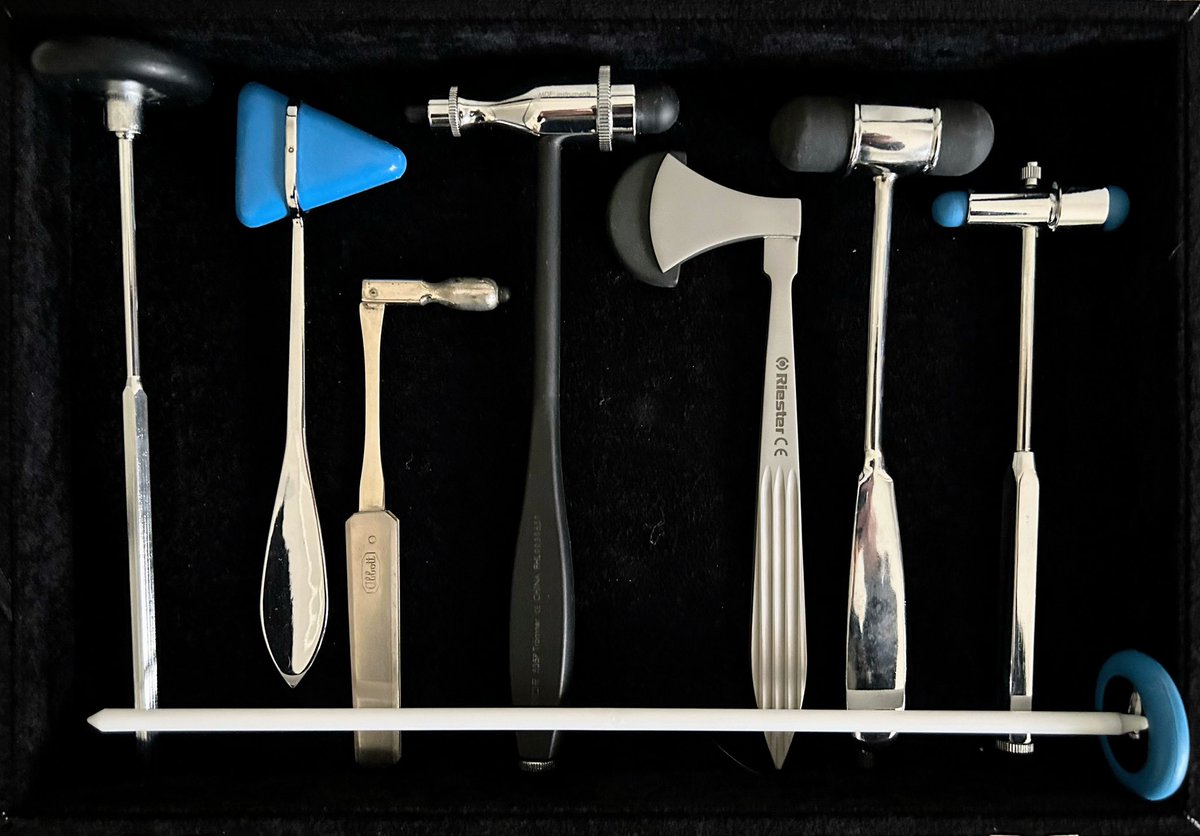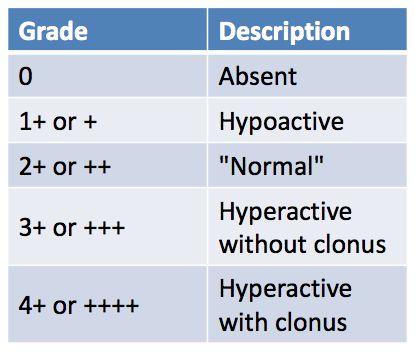
I'm a collector, a neurology nerd, and a history fan by nature. The result of all of those is that I now own every major type of #neurology reflex hammer, and I've done the work for you to rank them.
Check out my reasoning below.
#neurotwitter #medtwitter
Check out my reasoning below.
#neurotwitter #medtwitter

Tromner (S)
It's simultaneously the Cadillac and the Toyota Camry of reflex hammers. Most (American) neurologists carry one for a simple reason: it's the best. Best length, best weight, pointed tip for Babinski sign... There's really nothing negative to say.
It's simultaneously the Cadillac and the Toyota Camry of reflex hammers. Most (American) neurologists carry one for a simple reason: it's the best. Best length, best weight, pointed tip for Babinski sign... There's really nothing negative to say.

Berliner (A)
Doesn’t get enough love. Has a great weight and pointed tip. It's slightly shorter and thinner so it can fit in your pocket. While the shorter handle and off-balance head are actually advantageous, I can't deny that it doesn't feel as good in your hand as a Tromner.
Doesn’t get enough love. Has a great weight and pointed tip. It's slightly shorter and thinner so it can fit in your pocket. While the shorter handle and off-balance head are actually advantageous, I can't deny that it doesn't feel as good in your hand as a Tromner.

Déjerine (A)
Good length, great striking surface. It's got the weight and feel of a Tromner, but it looks more "balanced" without the little hammer on the side. It lacks a pointed tip for getting a Babinski, though.
Good length, great striking surface. It's got the weight and feel of a Tromner, but it looks more "balanced" without the little hammer on the side. It lacks a pointed tip for getting a Babinski, though.

Buck (B)
It's a little too short and a little too light, although not as light as a Taylor. It's small enough to fit in a pants pocket, which is nice, but it's double-headed so it usually gets stuck.
It's a little too short and a little too light, although not as light as a Taylor. It's small enough to fit in a pants pocket, which is nice, but it's double-headed so it usually gets stuck.

Babinski (C)
Good weight, great striking surface, good length, and has a point for checking a, well, Babinski. The round head makes it a little harder to store in your pocket. The handle is also too skinny and it tends to roll off the table. Telescoping versions feel gimmicky.
Good weight, great striking surface, good length, and has a point for checking a, well, Babinski. The round head makes it a little harder to store in your pocket. The handle is also too skinny and it tends to roll off the table. Telescoping versions feel gimmicky.

Queen Square (C)
Brits can get on my level: your hammer is just not good. Sorry, not sorry. The handle is so long it constantly gets snagged on stuff. See my complaints about the Babinski above. Popular doesn’t mean good. See also: the Taylor hammer.
Brits can get on my level: your hammer is just not good. Sorry, not sorry. The handle is so long it constantly gets snagged on stuff. See my complaints about the Babinski above. Popular doesn’t mean good. See also: the Taylor hammer.

Taylor (D)
The standard American 60 gm Taylor just sucks. It’s too light, too short, and has a weird striking surface. Generations of medical students think they can’t get a brachioradialis reflex because all they’ve used is the Taylor that came with their stethoscope.
The standard American 60 gm Taylor just sucks. It’s too light, too short, and has a weird striking surface. Generations of medical students think they can’t get a brachioradialis reflex because all they’ve used is the Taylor that came with their stethoscope.

Finger method (D)
I’m not actually recommending this strategy, but… it actually works decently well, at least on the wards. You’ll look like a neurology god when you do it. Attendings love it. EM docs SHOULD love it. But they’ve given their hearts, for some reason, to…
I’m not actually recommending this strategy, but… it actually works decently well, at least on the wards. You’ll look like a neurology god when you do it. Attendings love it. EM docs SHOULD love it. But they’ve given their hearts, for some reason, to…

Stethoscope (F)
Checking reflexes with a flexible stethoscope is like playing billiards with a rope. Just use your fingers, it’s easier and more accurate.
Checking reflexes with a flexible stethoscope is like playing billiards with a rope. Just use your fingers, it’s easier and more accurate.

• • •
Missing some Tweet in this thread? You can try to
force a refresh







